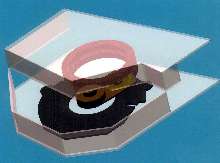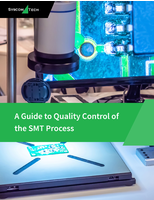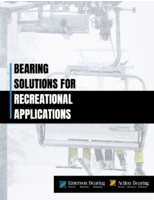Rotating Fixture improves quality of disc grinding.
Press Release Summary:
 Power-Rotating Fixture allows simultaneous grinding of both sides of parts. It is used with company's vertical double-disc grinders to produce lap-type tolerances in grinding parts with flat and parallel surfaces. Part rotation is fully programmable using servo-controlled fixture, so amount of rotation can be varied during grind. Because it is independent of carrier drive system, fixture can be installed and removed with little downtime for changeover.
Power-Rotating Fixture allows simultaneous grinding of both sides of parts. It is used with company's vertical double-disc grinders to produce lap-type tolerances in grinding parts with flat and parallel surfaces. Part rotation is fully programmable using servo-controlled fixture, so amount of rotation can be varied during grind. Because it is independent of carrier drive system, fixture can be installed and removed with little downtime for changeover.Original Press Release:
New Power-Rotating Fixture Improves Quality of Disc Grinding
Waynesboro, Pennsylvania, February 18, 2003 - A new Power-Rotating Fixture designed for use with Gardner vertical double-disc grinders produces lap-type tolerances in grinding parts with flat and parallel surfaces, say engineers at Landis Gardner. The servo-controlled fixture can be readily adapted to the company's GV600 double disc grinders.
The new fixture, which allows simultaneous grinding of both sides of parts, is especially suited for applications with critical tolerances such as grinding compressor or steering pump components. Parts of this type typically require flatness and parallelism tolerances of approximately 1 micron or 40-millionths of an inch. Rotating the part in a controlled motion is a key to achieving this level of accuracy, say company engineers.
"Keeping the part rotating during grinding is a fundamental principle of disc grinding," explains Andy Rovelstad, manager of disc grinding engineering at Landis Gardner. "But, in conventional oscillating or progressive rotary-grind set ups, rotation of the part occurs only from the motion of the grinding wheels, so it is not fully predictable. The new Power-Rotating Fixture provides a controlled rotating force that causes the part to remain active during the grind. Because it's rotating in the grind zone, the part gets to 'see' more of the wheel, so we maintain closer flatness specifications than with a straight oscillating or rotating grind."
The new Gardner Power-Rotating Fixture is also advantageous when grinding heavy parts. The part rotation is fully programmable using the servo-controlled fixture, so the amount of rotation can be varied during the grind.
Because it is independent of the carrier drive system, the Power-Rotating Fixture can be installed and removed with very little downtime for changeover. Therefore it is possible to use a conventional rotary-grind method for roughing, and then change to the power-rotating carrier for finishing.
Landis Gardner engineers say that the new Power-Rotating Fixture allows users to obtain the high-productivity benefits of double-disc grinding together with an improvement in flatness and parallelism accuracy. This can be advantageous even for processes that require final lapping, because stock removal can be minimized for the finishing operation.
Complete information on the Gardner Power-Rotating Fixture can be obtained by contacting Bill Short at Landis Gardner.
Landis Gardner, a member of the UNOVA family of companies, is a pioneer and world leader in the design and manufacture of precision cylindrical, centerless, and single- and double-disc grinding machines The company's Gardner Abrasives operations also designs and manufactures grinding and disc wheels. In addition, Landis Gardner's CITCC) operation makes diamond and CBN (cubic boron nitride) grinding wheels, diamond dressing tools, and PCD (polycrystalline diamond) and PCBN (polycrystalline cubic boron nitride) cutting tools.
Headquartered in Woodland Hills, California, UNOVA specializes in the design and integration of manufacturing systems, primarily for the global automotive and aerospace industries. The Company is also a leading supplier of automated data collection and mobile computing systems for industrial, distribution and government markets.




